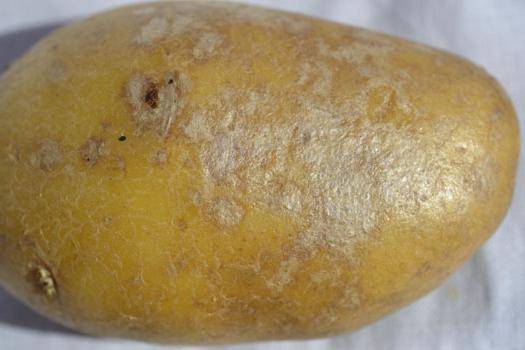In this article, we will delve into the growing concern over the plant disease silver scurf caused by the fungus Helminthosporium solani in potato farming. We will explore the latest data and research on the topic, the development of this disease, and the consequences it can have on potato yields and quality. Furthermore, we will provide strategies for farmers, agronomists, and agricultural engineers to manage and prevent silver scurf from damaging their crops.
Silver scurf is a plant disease that affects potato crops worldwide, leading to reduced yields and lower-quality potatoes. According to recent data from the University of Wisconsin-Madison, the disease can cause up to a 60% reduction in potato yields if not managed effectively. Moreover, silver scurf can lead to significant financial losses for potato farmers, as it can reduce the marketability of the potatoes due to discoloration and reduced storage life.
The development of silver scurf is heavily influenced by environmental factors such as temperature, humidity, and soil type. However, the use of infected seed potatoes and poor crop management practices can also contribute to the spread of the disease. Recent research has shown that using disease-free seed potatoes, rotating potato crops with non-host crops, and applying fungicides can effectively manage and prevent silver scurf.
In conclusion, the threat of silver scurf in potato farming is a growing concern that requires attention from all stakeholders in the industry. Farmers, agronomists, and agricultural engineers must work together to implement effective management strategies to prevent the spread of the disease and minimize its impact on potato yields and quality.
#SilverScurf #HelminthosporiumSolani #PotatoFarming #CropManagement #DiseasePrevention #Fungicides #SeedPotatoes #AgricultureResearch
